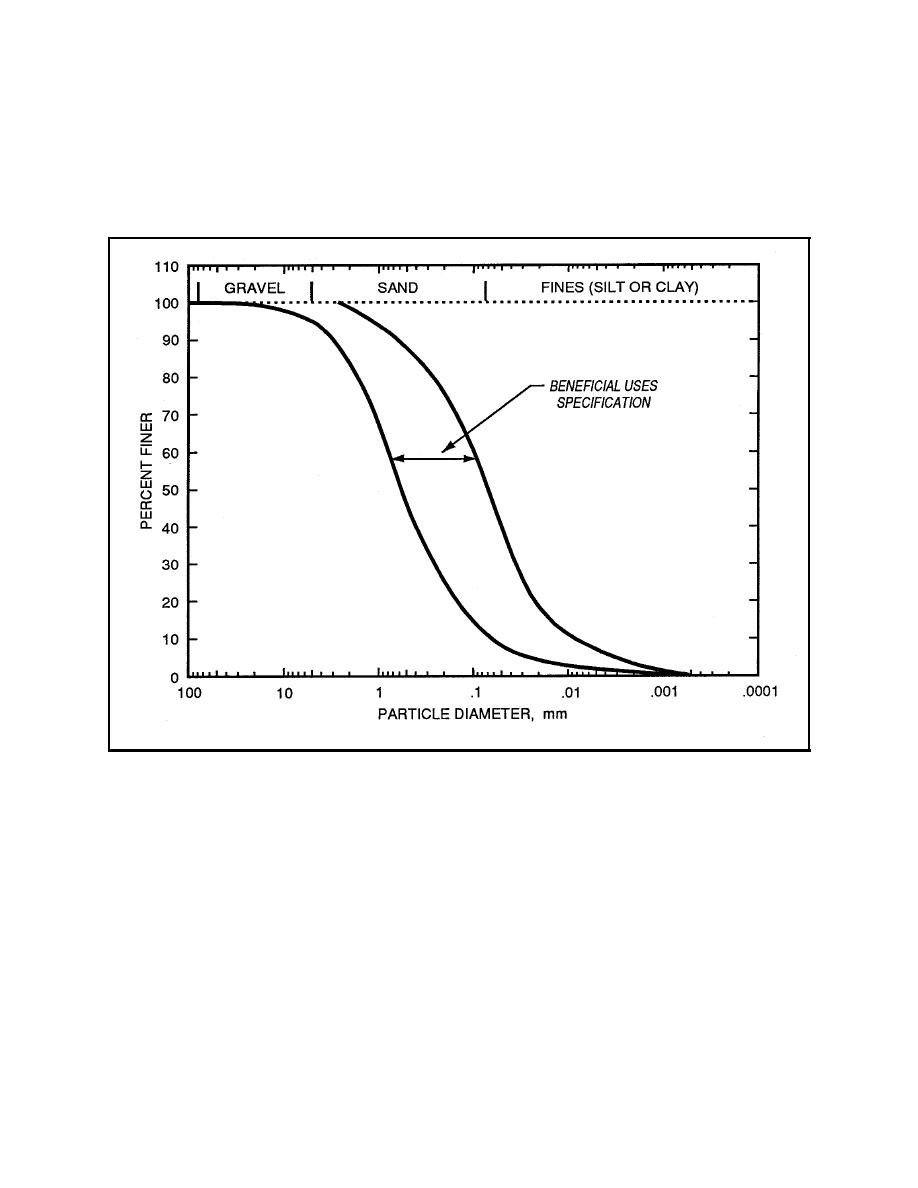 |
||
|
|
||
|
Page Title:
Figure 2. BU grain size specification example |
||
| |||||||||||||||
|
|
 ERDC TN-DOER-C13
July 2000
depend on the intended application. From the physical standpoint, the material specifications may
be an average grain size (D50) or a target GSD. The specifications may also include an acceptable
percentage of material finer or coarser than the desired range. For example, Figure 2 illustrates the
desired grain size range for a BU application for beach nourishment (note that specifications will
be site specific).
Figure 2. BU grain size specification example
Acceptable levels of COC are usually a function of environmental regulations or guidelines
pertaining to the type of activity associated with the BU application. Normally, these criteria or
standards will include specific concentrations of contaminants allowable, on a dry weight basis, in
a material intended for a specific BU. Regulatory agencies in some states have proposed or adopted
policies encouraging reuse of materials and provide for a case-by-case review and determination of
requirements (Olin 1998).
As previously discussed under "Material Characterization," the material specifications for antici-
pated BU should first be compared to the bulk material properties (as they exist prior to any
separation) to determine if the material can be used beneficially as is. Because chemical analysis
is extremely expensive, physical parameters, which can be quickly and inexpensively determined,
should be evaluated first. Grain size distribution may rule out certain BU without any further
analysis, or help to target a limited number of samples for chemical analysis if the GSD is compatible
7
|
|
Privacy Statement - Press Release - Copyright Information. - Contact Us - Support Integrated Publishing |